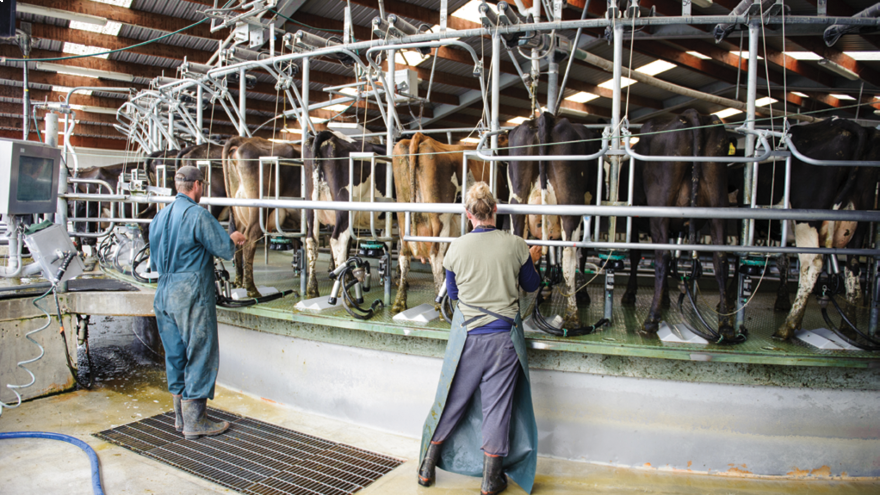
No shortcuts to plant hygiene
Any milk residues left behind in your dairy plant can support bacteria, which then contaminates the milk as it passes through. Plant hygiene, not taken seriously enough, is the most common cause of bacterial grades.
Bacterial grades are caused in various ways including by cooling and refrigeration issues. Perfectly good milk contains a lot of natural bacteria. Left unrefrigerated or cooled too slowly, the bacteria numbers increase rapidly resulting in a grade.
Another cause of bacterial grades can be mastitis. Streptococcus uberis infections are common in the first few months of the dairy season and a known cause of bacterial grades, even when they don’t lead to a large increase in the bulk somatic cell count.
Environmental contamination can cause bacterial grades. That is, bacteria collected off the outside of the teats, originating from mud, silage and manure.
There are no shortcuts in doing a complete plant inspection to prevent bacteria build up and milk contamination. Nothing should be neglected. Here is a suggested order of inspection to optimise plant hygiene:
- Inspect, with a torch, the vat for protein deposits on walls and floor. Check the inlet and outlet fittings, the paddle and under door seals.
- The milkline is the number one cause of all types of hygiene grades. Look for patches of soil on the upper surfaces, especially at the far end.
- Check the clusters by feeling inside all the liners, and also remove sight glasses and check the claw bases. If a liner is dirty, or a whole cluster, inspect its associated jetter for blockage.
- Look at the receiver, especially the upper surfaces (above the normal wash water level), where protein deposits are common.
- Open the pump, especially multi-head diaphragm types, and check for splits, signs of perishing and foreign matter in the non-return valves.
- Examine the filter, especially the top of the tube, and around the end seals of the cage.
- Go back to the main milkline and work through each and every joint and union, all the way through to the vat. Look for failed or misaligned seals, loose nuts and leaks.
- Check rubberware, especially any you know to be getting a bit old. You need a ‘trier’, a gadget that is inserted into the hoses and used to scrape the walls for evidence of soil or perishing (leaves a black deposit on the trier).
- Check and smell the airlines, both pulsator and receiver, for signs of milk. Open and inspect the plate cooler, looking for foreign matter and damaged seals.
- Don’t forget to check your temperatures, both precooling and refrigeration.
Agmax Industries has been supplying hygiene products to the dairy industry for 30 years. Traditionally delivering direct to
farm, Agmax Industries’ full range is now available through PGG Wrightson’s large store network. Agmax dairy hygiene detergents, teat sprays, emollients and animal health and bloat control products are approved by the Ministry of Primary Industries and Agricultural Compounds and Veterinary Medicines.
Visit your local PGG Wrightson store to find an Agmax product to assist with keeping your dairy plant bacteria free.



